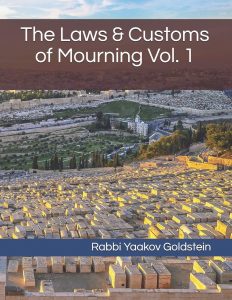*As an Amazon Associate I earn from qualifying purchases.
The Mitzvah of Taharah and its order:[1]
It is a Jewish custom dating back many generations to wash, cleanse and prepare the body of the deceased prior to burial. This is formally known as “Taharah” or purification.[2] The Mishneh[3], Talmud and Poskim[4] record the practice of washing the deceased, as well as other customs performed in the Taharah process. Nonetheless, the many details of the Taharah performed today, and its ensuing order, is not recorded in the Talmud, and is not of Biblical or even Rabbinical status.[5] The detailed order of the Taharah is first recorded in the Rishonim.[6] A number of Sefarim[7] record the tradition of Taharah in the name of Hillel Hazakein, who lived in the Mishnaic era, and it is thus known as “Seder Rechitza Hameis MiHillel Hazakein.” At first, this detailed order of the Taharah was only performed on the bodies of men of great caliber and Tzaddikim[8], thus explaining its omission from the Shulchan Aruch and its commentaries. Practically, throughout the generations, the detailed order of Taharah became accepted to be performed on the body of all those who have deceased, and is recorded in various Poskim.[9] Nonetheless, the exact order and details of the Seder Taharah differ from one book to another, and practically every community is to follow their tradition.[10] The widespread custom today is to follow the order written in the Sefer Mavor Yabok.[11]
Not to swerve from any of the traditions:[12]
Each and every tradition involved in the Taharah and burial of the deceased is to be strictly followed. Swerving from the community custom can lead to danger for the community.
The spiritual effect of the Taharah:[13]
The Jewish custom is to refer to the cleansing process of the deceased as “Taharah/Purity.” The reason for this because the Taharah effects a spiritual refinement of the soul of the deceased. It cleanses the soul from its attachment to this world, and thus the soul’s knowledge of this world is decreased after the Taharah.
Slow and methodically:[14]
The Taharah procedure is to be done slowly and methodically so that the body is pure and clean, similar to how he would prepare himself to go to Shul each Shabbos.
The Seder Taharah for women:[15]
The same order of the Taharah that is followed for the body of a man is likewise followed for the body of a woman [with exception to the order of dressing the corpse, as will be explained[16]].
What is done during the Taharah:
The following matters are done to the body of the deceased during the Taharah process. Each matter listed here will be elaborated on in the coming Halachos.
- The entire body is washed.
- The orifices of the deceased are to be washed and stuffed with good smelling scents.
- One combs the hair of the deceased.
- One cuts or cleans the nails of the deceased.
- The body is immersed in a Mikveh or has nine Kavin poured over him.
- One closes the eyes of the deceased.
- One closes the mouth of the deceased.
- One smears raw eggs and wine on the head of the deceased.
- The body is dressed in Tachrichin.
- A Tallis is wrapped around the body of a male.
______________________________________________
[1] See Nitei Gavriel 39:2 footnote 2
[2] See Rama 349:3 “The board on which the Taharah took place”
[3] Mishneh Shabbos 151a
[4] Michaber O.C. 311; Y.D. 352; Admur 311:13; 526:3
[5] Chochmas Adam in Hanhagas Chevra Kadisha 1
[6] Rokeiach 317; Rebbe Yehuda Hachassid, brought in Chochmas Adam ibid
[7] Sefer Tzarei Lanefesh; Mavor Yabok Sifsei Rinanos 17 “Seder Rechitza Hagedola from Hillel Hazakein”; Lechem Hapanim 352:4; Darkei Chesed 11:1 footnote 1; See Gesher Hachaim 9:1
[8] See Shevet Yehuda 352:4; Lechem Hapanim 352; Nitei Gavriel ibid
[9] Lechem Hapanim 352; Chochmas Adam ibid; Kitzur Shu”a 197:2-4
[10] Teshuvah Meahavah 3:410
[11] Mishmeres Shalom Tes 20
[12] Beis Lechem Yehuda 352:2; Tuv Taam Vadas 2:238; Halef Lecha Shlomo 305; Beis Shlomo 2 Y.D. 227; Nitei Gavriel 42:1
[13] Mavor Yabok Sefas Emes 25
[14] Darkei Moshe 352:2; Binyamon Zev 204 in name of Rav Eliezer Halevi
[15] Gesher Hachaim 10:2; Darkei Chesed 12:14; Nitei Gavriel 40:12; 44:19
[16] Darkei Chesed ibid



Leave A Comment?
You must be logged in to post a comment.